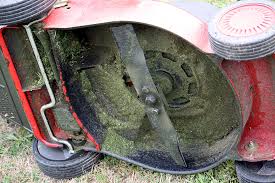Mower Maintenance
Mowing grass is one of the most important things you can do to improve your landscape’s appearance and doing it correctly can even help it stay healthier. VIRIDIS Lawn Care of Salt Lake City has some tips for keeping your mower in optimal condition to keep it from damaging your grass. Storing and maintaining your mower properly can help it last longer and cut better throughout the summer months resulting in a more beautiful, healthy lawn.
The most obvious tip is to read and follow instructions in the mowers owner’s manual. Each machine operates a little differently and the manual will help ensure you keep your machine in the best condition. However, not everyone keeps their owner’s manual or some have bought a used machine that came without one. Following are some standard hints that work for most machines to help keep them in good condition.
Always run out or drain the gasoline tank in the fall. Use fresh gasoline each spring. Old gasoline often causes problems with the mower starting.
Cleaning the machine throughout the year can prevent clogging and caking. Spraying undercarriage with a hose or using a brush or scraper to clean out already stuck on grass can help the blades run smoother.
Check oil and filters. Oil that is dark or has debris should be replaced immediately. Remove the drain plug beneath the mower and drain into pan or bucket. Replace the plug and refill with the correct type of oil for your specific machine. Filters that are clogged should be replaced immediately. Otherwise, replace yearly to help the mower use gasoline more effectively.
Spark plugs can also be replaced yearly. Simply unhook the wire and remove the plug with a socket wrench. When replacing the spark plug, be sure not to over tighten or the mower may not start.
One of the best tips to keep the mower cutting its best is to keep the blade sharp. Mowing over sticks, rocks and even just grass can wear on a blade causing it to rip the grass rather than cut it smoothly. This opens the lawn up to disease and pests. Keeping a sharp blade will also provide a more even appearance without damaged, yellowed tops on the blades of grass.
All of these things can be done yourself or by getting a professional tune-up. Most or all are part of a standard tune-up by a mower repair shop. A professional can also provide additional diagnostics for problems you may be having or hints for your specific machine to keep it running its best. Insuring that your mower is in peak condition will, in turn, insure that your lawn can be in peak condition.




